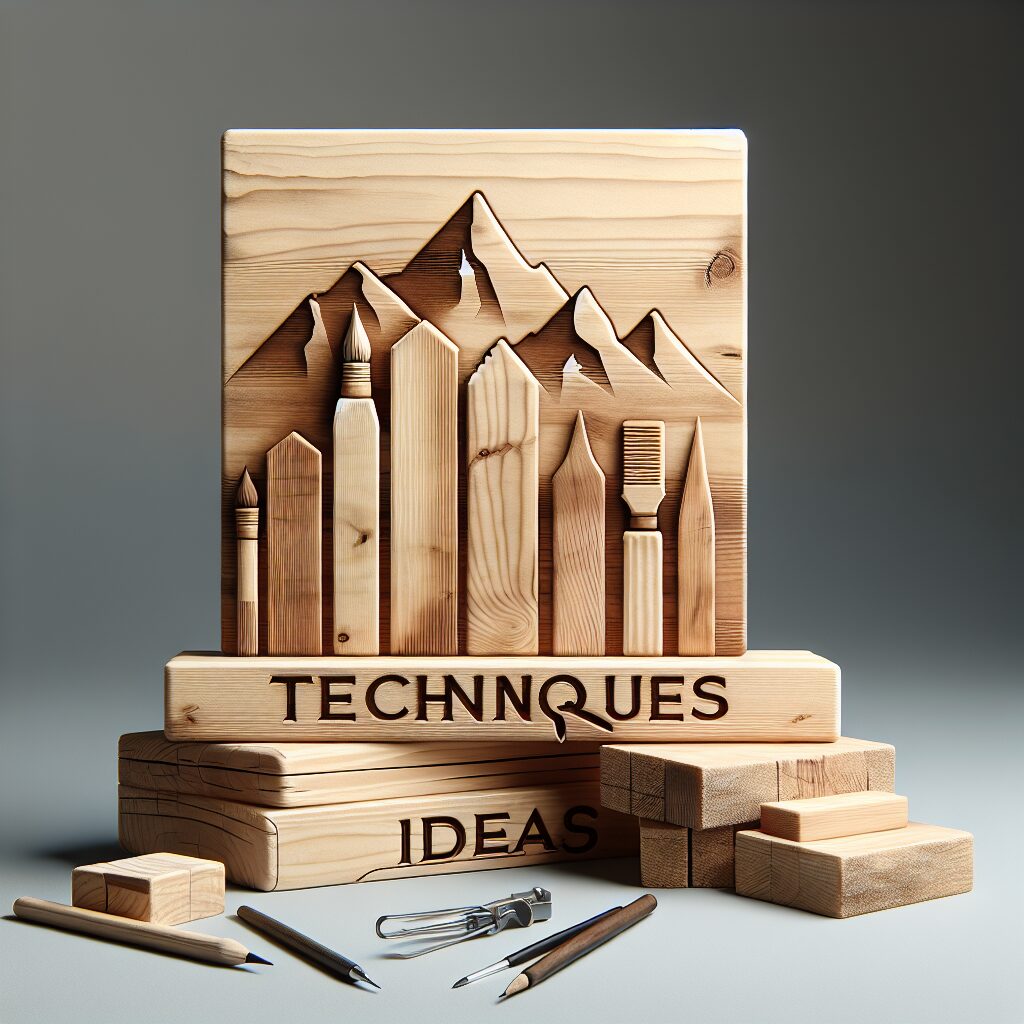Wood bending and shaping is an art that has evolved significantly over the years, incorporating various innovative techniques that allow artisans to create stunning and functional pieces. Whether you’re a seasoned woodworker or a beginner, understanding these methods can enhance your craftsmanship and open up new design possibilities. In this exploration, we will delve into some of the most effective techniques for bending and shaping wood, ensuring you have the tools and knowledge to elevate your woodworking projects.
Understanding Wood Bending Techniques
Wood bending is the process of manipulating wood into curved shapes without breaking it. This technique can be achieved through several methods, each with its unique advantages and applications. One popular technique is steam bending, where wood is exposed to steam for a certain period, making it pliable enough to be bent into shape. After bending, the wood is often secured in place until it dries, ensuring it retains the desired form.
Another effective method is laminated bending, which involves gluing together thin strips of wood to create a thicker piece that can be bent into a curve. This technique not only provides strength but also allows for intricate designs that would be impossible with solid wood. Many artisans use laminated bending for furniture pieces, such as chairs and tables, where both aesthetics and durability are crucial.
The Role of Heat in Shaping Wood
Heat plays a vital role in the shaping of wood, particularly in techniques like hot pipe bending. This method involves heating a pipe and using it to direct hot air onto the wood, making it flexible and easier to manipulate. The beauty of hot pipe bending lies in its ability to create smooth, flowing curves that enhance the overall design of the piece.
Additionally, heat guns can be used for smaller projects, providing localized heat to specific areas of the wood. This technique is particularly useful for creating detailed shapes and curves in decorative items. For those looking to master wood bending, understanding the principles of heat application is essential.
Innovative Tools and Equipment
As woodworking technology advances, so do the tools available for bending and shaping wood. Modern equipment, such as CNC routers, has revolutionized the way woodworkers approach their projects. These machines can cut and shape wood with precision, allowing for intricate designs that were once labor-intensive. For those interested in exploring these advancements, innovative router techniques can significantly enhance your woodworking capabilities.
Moreover, specialized clamps and jigs can make the process of bending wood much easier and more efficient. These tools help secure the wood in place while it is being bent, ensuring that it holds its shape as it dries. Understanding how to use these tools effectively is crucial for anyone looking to expand their woodworking skills.
Exploring Woodturning Techniques
Woodturning is another innovative method that allows for unique shaping of wood. Using a lathe, woodworkers can create symmetrical and aesthetically pleasing designs. The process involves rotating the wood while cutting tools shape it into the desired form. This technique can be particularly useful for making bowls, vases, and other decorative items.
For those new to woodturning, learning the woodturning basics can provide a solid foundation. Understanding the tools and techniques involved in woodturning can open up a new world of creative possibilities for your woodworking projects.
| Technique | Description | Best Use |
|---|---|---|
| Steam Bending | Involves exposing wood to steam to make it pliable. | Curved furniture components. |
| Laminated Bending | Gluing thin strips of wood for bending. | Complex shapes in furniture. |
| Hot Pipe Bending | Using heated pipes to bend wood. | Smooth curves in decorative items. |
Wood bending and shaping have evolved significantly, allowing artisans and craftsmen to create intricate designs and functional pieces. The techniques used today are a blend of traditional methods and innovative approaches that enhance the capabilities of wood as a material. Understanding these innovative techniques not only broadens the scope of woodworking but also opens up new avenues for creativity.
Steam Bending: A Time-Tested Technique
One of the most popular methods of wood bending is steam bending, which involves softening the wood fibers with steam before applying force to shape them. This technique has been used for centuries, particularly in the making of furniture and boat building. When the wood is exposed to steam, it becomes pliable, allowing it to be bent into various forms. After bending, the wood is typically held in place until it dries, retaining its new shape. For those looking to master this craft, exploring woodworking joinery methods can complement the bending process, ensuring that joints remain strong and reliable.
Modern Innovations in Steam Bending
While traditional steam bending is effective, modern innovations have introduced new tools and techniques that enhance the process. For instance, some craftsmen now use specialized steam boxes that allow for more controlled heating and moisture distribution. Additionally, advancements in wood treatment have improved the flexibility of certain species, making them easier to bend without breaking. As artisans continue to experiment, the results can lead to unique pieces that showcase both artistry and engineering.
Laminate Bending: Combining Strength and Flexibility
Another innovative technique in wood bending is laminate bending, which involves gluing together thin layers of wood to create a curved form. This method allows for greater control over the final shape and is particularly useful for creating complex designs. Since the layers can be made from different types of wood, laminate bending also offers aesthetic versatility. For those interested in sustainable practices, looking into eco-friendly bamboo woodworking can provide insights into how to utilize renewable materials effectively.
The Process of Laminate Bending
The laminate bending process begins with cutting the wood into thin strips, which are then glued together and clamped into a mold. Once the glue has cured, the resulting piece is incredibly strong and can be shaped into various forms. This technique is particularly popular in furniture design, where curves can add a modern touch to traditional styles. Moreover, learning about green woodworking techniques can further enhance one’s skills in working with wood sustainably while achieving beautiful results.
As we wrap up our exploration of innovative techniques for wood bending and shaping, it’s clear that the woodworking craft is continually evolving. Woodworkers are constantly seeking new methods to manipulate this versatile material, allowing for more creativity and functionality in their projects. By embracing these techniques, artisans can achieve stunning results that not only enhance the aesthetic appeal of their creations but also improve their structural integrity.
Exploring Advanced Techniques
Among the advanced methods of wood bending, steam bending remains a favorite due to its effectiveness and simplicity. This technique involves heating the wood with steam, making it pliable enough to bend into various shapes. Once the wood is bent to the desired form, it can be held in place using jigs or molds until it cools and retains its new shape. This method is widely used in the production of furniture, musical instruments, and even boat building, showcasing the versatility of steam bending.
Another innovative technique involves using heat to reshape wood, similar to steam bending but utilizing hot air or heated metal forms. This method allows for more precise control over the bending process, making it easier to create intricate designs. Woodworkers often employ this technique in combination with other methods, such as laminating thin strips of wood, which can then be bent into complex curves and shapes. By layering the wood, artisans can achieve greater strength and flexibility, resulting in beautifully crafted pieces.
Utilizing Modern Technology
In recent years, the integration of technology into woodworking has opened up a world of possibilities. CNC machines and laser cutters allow for precise cuts and shapes that were once difficult to achieve by hand. These tools enable woodworkers to create complex designs and patterns, making it easier to experiment with new forms. Additionally, advancements in software provide the ability to visualize projects before any physical work begins, streamlining the design process and reducing material waste.
Moreover, the use of templates has become increasingly popular in woodworking. By using templates in woodworking, artisans can replicate shapes consistently, ensuring that each piece matches perfectly. This technique is especially useful in mass production settings, where precision and uniformity are essential. Templates can be made from a variety of materials, allowing for flexibility in design and application.
As the woodworking community continues to share knowledge and techniques, the possibilities for wood bending and shaping are expanding. Collaborations among artisans, workshops, and online forums foster an environment of creativity and innovation. By staying connected and sharing experiences, woodworkers can inspire each other to push the boundaries of what is possible with wood.






